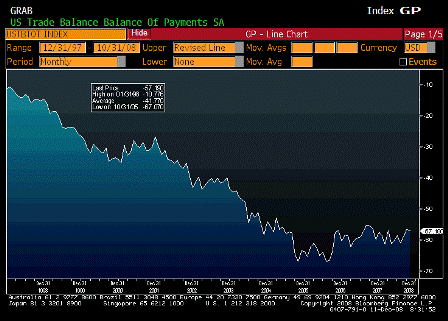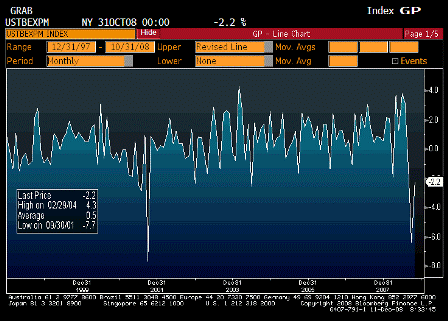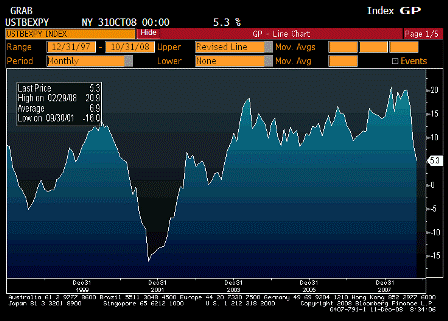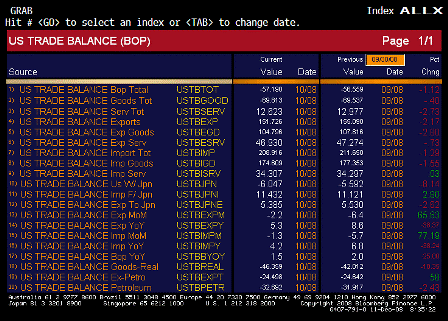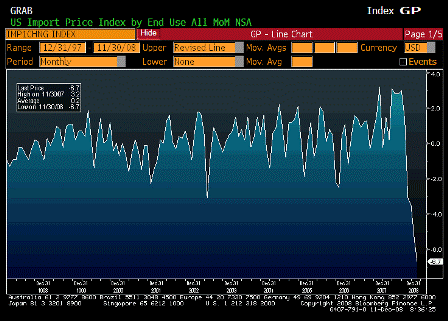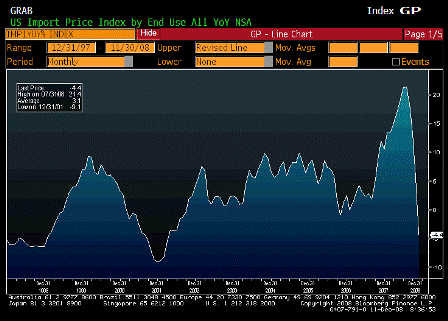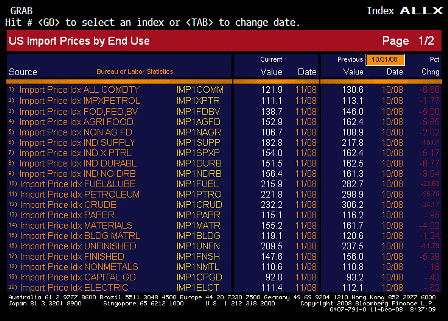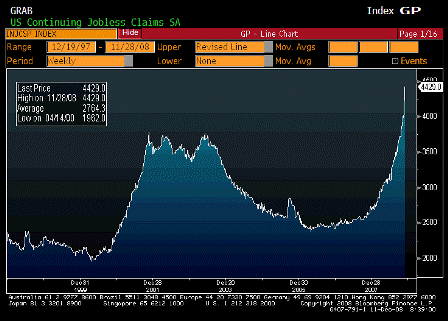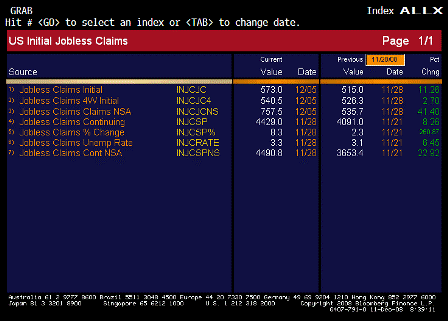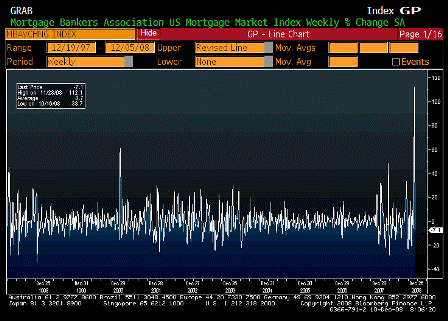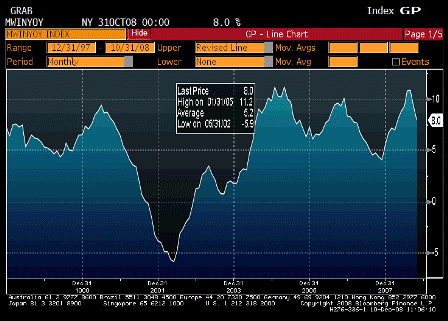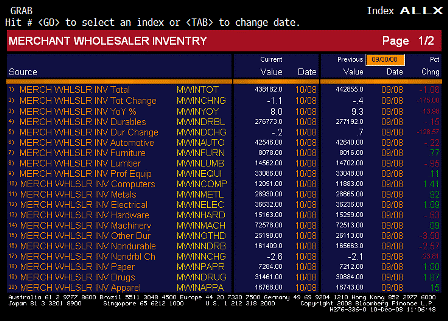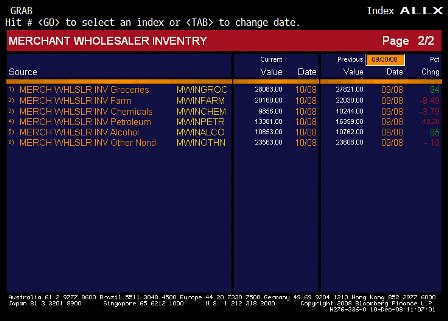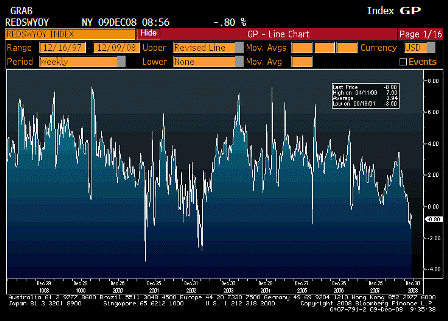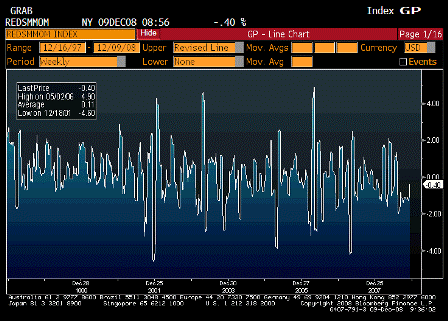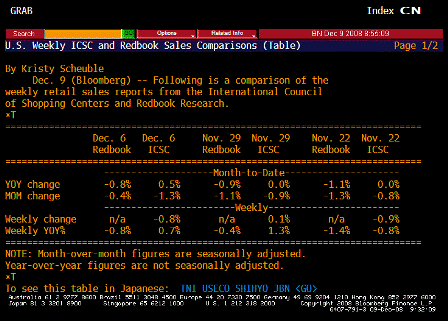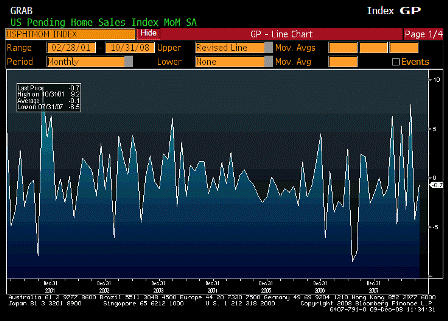[Skip to the end]
(email exchange)
right,
as I’ve been suggesting for a long time, all states should always pay only with iou’s.
that way they spend first, then collect taxes, just like the federal govt.
and they can deficit spend without a funding imperative as well.
>
> On 12/5/08, Jason wrote:
>
> My opinion is that the next major round of the bailout will need to be for the states… I am
> surprised there has not been more emergency loan news out from the government as of
> yet. Or purchases of debt from the fed etc.
>
> They probably want them to exhaust every budget trimming avenue first and eliminate a lot
> of the pork. But they can’t let that process go too far with the fragility of the economy.
>
By Michael B. Marois and William Selway
Dec. 5 (Bloomberg) — California, the world’s eighth largest economy, may pay vendors with IOUs for only the second time since the Great Depression, State Finance Director Mike Genest said.
In a letter to legislative leaders Dec. 2, Genest said the state “will begin delaying payments or paying in registered warrants in March” unless an $11.2 billion deficit is closed or reduced. California, which approved its budget less than three months ago, may run out of cash by March, state officials say.
Governor Arnold Schwarzenegger warned that he may issue the warrants, which are a promise to pay with interest, to suppliers and contractors as the seizure in credit markets may make it too costly to borrow.
“It’s getting worse very quickly,” Schwarzenegger, a 61-year-old Republican, told reporters Dec. 1 after declaring a fiscal emergency and ordering the Legislature into a special session to find ways to close the deficit. “It’s like an avalanche in that it gains momentum. And that’s what we’re in right now, so it’s a real crisis.”
California is reeling more than any other state from budget woes that pushed the nation’s governors to seek help from Congress. States say federal money is needed to ease the pain from spending cuts and tax increases that would be a further blow to an economy in the throes of a recession.
The warrants would be given to landscapers, carpet cleaners, construction firms, food services companies and other state vendors. They would pay an interest rate of as much as 5 percent, based on state law. California last issued the IOUs in 1992 when lawmakers and then-Governor Pete Wilson deadlocked on a budget for 61 days past the start of the fiscal year.
Higher Yields
Investors are souring on the state. California 10-year bonds yield 0.73 percentage point more than top-rated municipal bonds, according to Bloomberg indexes, the highest since the depths of the last budget crisis in Jan. 2004. By comparison, the difference for New York is 0.27 percentage point.
California Controller John Chiang said that the state’s cash account will decline to $882 million by February, below its preferred cushion of $2.5 billion, and will be negative $1.9 billion by March.
Tax collections have been hammered as the collapse of the real estate market eliminated 136,000 construction jobs in the past two years and caused consumers to curb spending. California leads the nation in home foreclosures, its 8.2 percent unemployment rate is the third-highest in the U.S., and the wealthiest 1 percent of citizens pay almost half its personal income taxes, making it sensitive to swings in the stock market.
Stock Losses
“When the market tanks those people sneeze and we in Sacramento get a cold,” said H.D. Palmer, a spokesman for Schwarzenegger’s finance department.
California’s two year budget shortfall is about $28 billion, accounting for one-third of the deficits faced by U.S. states, according to figures from the National Conference of State Legislatures in Denver.
“If the state’s having budget problems and they’re about to run out of cash, that limits their opportunity to raise money in the capital markets,” said Terry Goode, who heads up municipal bond research for Wells Capital Management in San Francisco.
The Port Authority of New York and New Jersey attracted no bids from investment banks to manage a $300 million taxable note offering this week.
Biggest Borrower
California, the biggest borrower in the municipal-bond market, has $51.9 billion in general-obligation debt. It’s rated A+ by Standard & Poor’s and Fitch Ratings, the fifth-highest grades, and an equivalent A1 at Moody’s Investors Service.
Even if the state runs out of cash, constitutional law stipulates that holders of California state general obligation bonds are first in line for payment by the treasury.
The budget deficit has grown even as California cut spending on health care, universities, and welfare programs. Schwarzenegger proposed a tax increase for the first time since he took office in 2003 as Democrats agreed to slash $8 billion in spending. Republicans, who have enough support to block a two-thirds majority needed to pass a tax increase, have made sure the measure has failed.
“This is not blind ideology on the part of Republicans, but our sincere belief that higher taxes will hurt the economy and lead to more uncontrolled spending,” said Assembly Republican leader Mike Villines.
Schwarzenegger’s declaration of a fiscal emergency gives lawmakers 45 days to plug the shortfall. If they fail to find a solution in that time, they are barred from doing any other legislative work until they do. The declaration came after lawmakers were unable to agree on a plan to close the gap during a three-week special session that expired Nov. 30.
“We’re just barely hanging on right now,” Chiang said. “We need strong legislative action immediately.”
[top]
